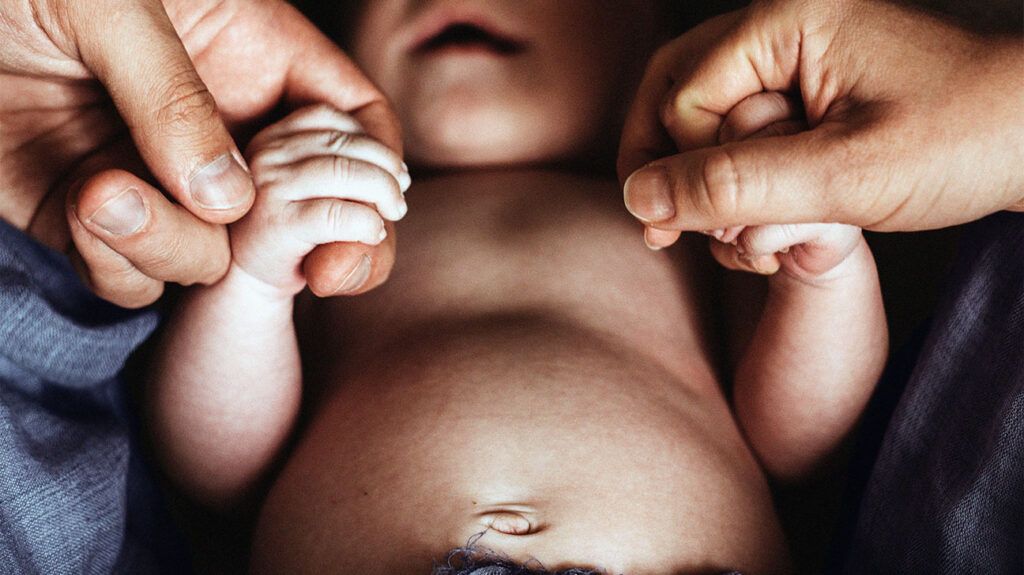Congenital muscular dystrophy (CMD) is a disease that affects certain muscles. Individuals with CMD may experience symptoms such as muscle weakness and joint problems.
“Congenital” means present since birth. Because CMD is a congenital condition, people with CMD are born with it.
These individuals inherit genetic mutations from their parents, leading to negative effects on certain muscles in the body. There is currently no cure for CMD, but researchers have developed many supportive therapies to help manage symptoms.
This article will explore CMD in more detail, including symptoms, treatment options, and more.

The symptoms of CMD can vary between individuals. Scientists have found at least 30 separate kinds of CMD. Each type may cause a unique set of symptoms.
However, some of the more common symptoms of CMD may include:
- low muscle tone in early infancy
- joint tightness
- breathing problems
- limited mobility
- eating difficulties
Infants born with CMD may appear floppy because of their low muscle tone. Toddlers may have difficulty holding their heads up or sitting on their own. Children with CMD may develop the ability to walk. However, they may not begin to walk until age 5 or later.
In CMD, genetic mutations can affect muscle development, and different mutations affect muscles in different ways.
The Muscular Dystrophy Association currently recognizes 33 different types of CMD. Each type involves a specific genetic mutation.
Some of the more common types of CMD include:
- Becker dystrophy
- Fukuyama dystrophy
- myotonic dystrophy
- Duchenne dystrophy
Scientists have found that Duchenne dystrophy is the most common type of CMD. Researchers estimate that it affects
However, the most common type of CMD can depend on an individual’s location. In Japan, for example, Fukuyama muscular dystrophy is the most prevalent type of CMD.
Congenital muscular dystrophy is a genetic disease, meaning genetic changes or mutations cause CMD symptoms.
People with CMD inherit mutations from their parents. These mutations have a negative effect on a certain kind of protein known as a glycoprotein. Damage to these proteins leads to impaired muscle function.
In most cases, people with CMD inherit this disease in a recessive pattern. This means that they inherit one mutation from each of their parents.
A person can talk with a doctor to learn more about what causes CMD. Individuals with a family history of CMD may also be eligible for genetic screening.
The onset of CMD typically occurs at birth or in early infancy. Infants and children with CMD may develop a range of different symptoms. As infants, individuals with CMD may experience:
- breathing problems
- joint tightness
- spinal curvature
- swallowing difficulties
As they progress through childhood, these symptoms may grow to include:
- an increased risk of fractures
- developmental delays
- muscle weakness
- seizures
- vision problems
- heart conditions
The progression of CMD depends on many factors. These can range from age or secondary health conditions to CMD type. Symptoms
- mechanical ventilation to assist with breathing
- a feeding tube
- surgery
- intensive physical therapy
Each individual journey with CMD is unique. Some individuals may experience more advanced symptoms or require specialized care. To learn more about CMD progression, a person can consult a doctor. Only a medical professional can assess individual support needs.
Doctors conduct several different tests that can inform a CMD diagnosis. These
- blood tests to check for atypical protein levels
- a brain MRI
- heart function tests such as an echocardiogram
- muscle biopsy
- genetic testing
Through genetic testing, a doctor can confirm a diagnosis of CMD and identify the specific CMD type. Determining what type of CMD an individual has can help doctors develop an effective treatment plan.
There is currently no treatment available that can cure CMD. However, a number of different treatments
- physical therapy
- surgical intervention
- breathing support
- occupational therapy
Recent studies have also shed new light on gene therapy for CMD. This type of treatment works by changing an individual’s genetic material, which can address the genetic mutations that cause CMD.
Early studies have indicated that gene therapy
CMD is a fairly rare condition, which some scientists believe affects
The rates of CMD
Below are answers to common questions about CMD.
What is the life expectancy of a child with muscular dystrophy?
The life expectancy of a child with CMD can vary considerably. For instance, children with a type of CMD known as muscle-eye-brain disease generally live
What is the most common congenital muscular dystrophy?
Duchenne muscular dystrophy is the most common type of CMD, affecting
Congenital muscular dystrophy (CMD) is an inherited disease that affects muscles throughout the body. Most people with CMD receive a diagnosis during their birth or infancy.
Individuals with CMD can experience a range of different symptoms, such as muscle weakness, joint problems, and breathing difficulties. The symptoms of CMD are progressive, which means they worsen over time.
Although there is no cure for CMD, researchers have developed different treatments for managing CMD symptoms. Novel treatments, such as gene therapy, can also help in certain cases.
